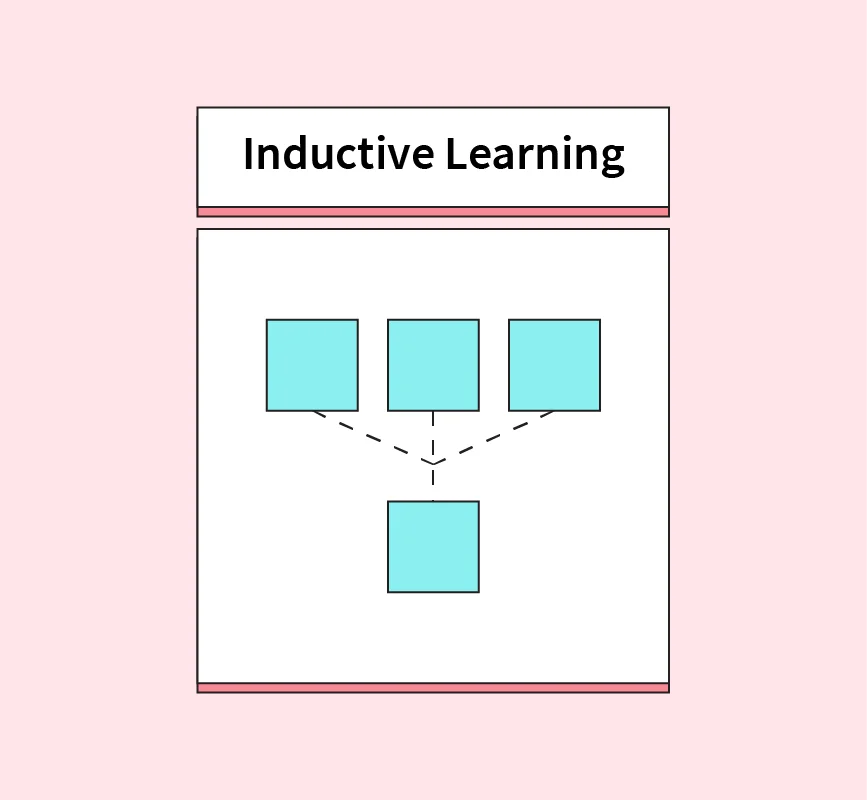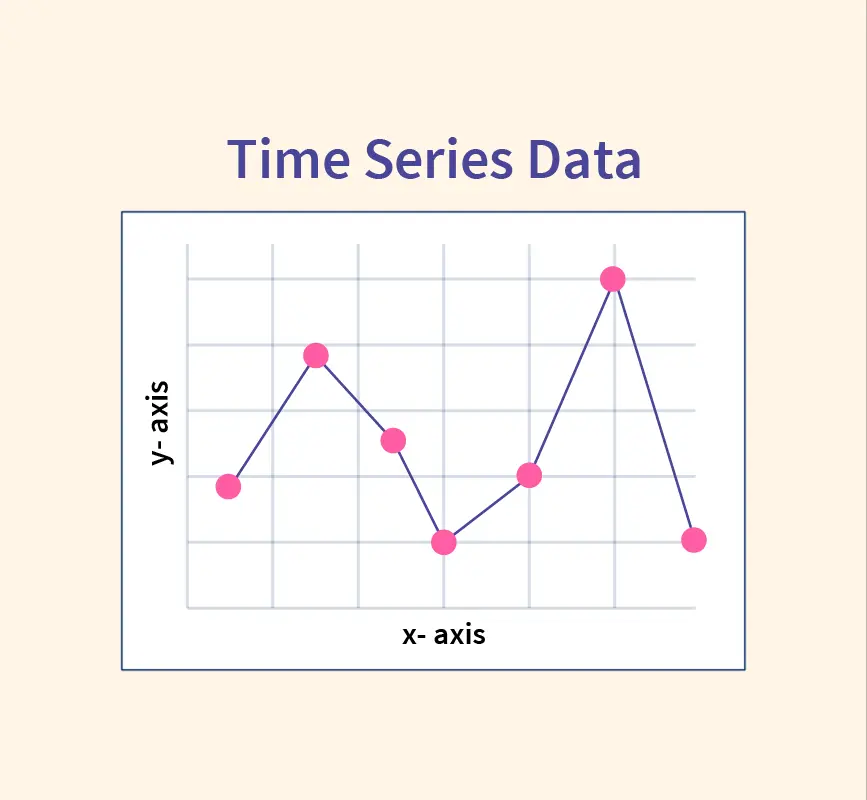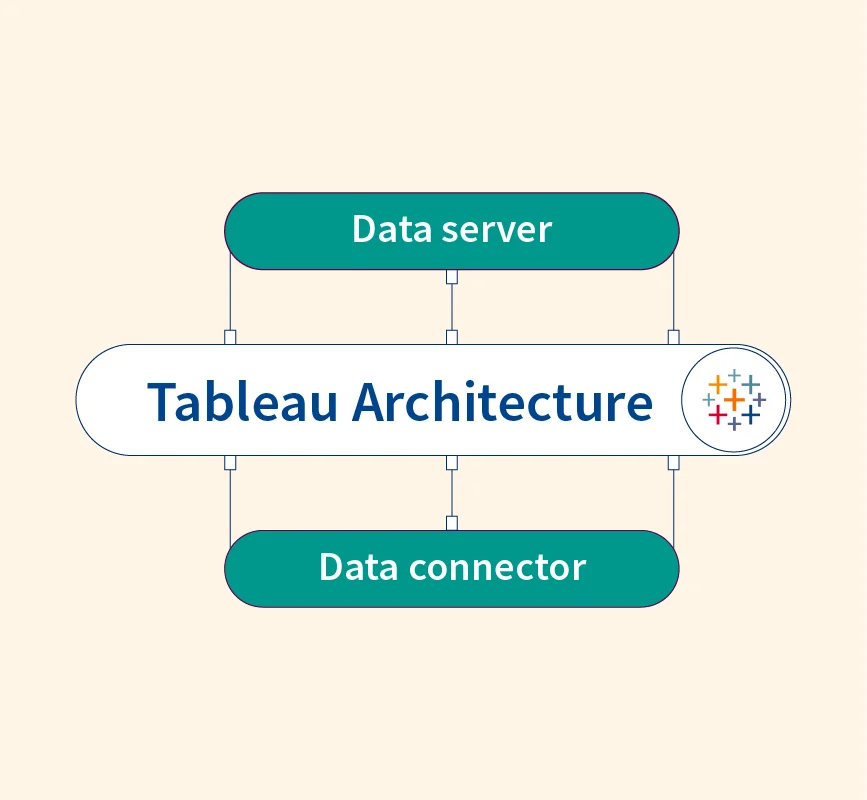Neural networks are at the heart of many advancements in Machine Learning and Artificial Intelligence. They are powerful tools that mimic how the human brain works, enabling machines to recognize patterns, make decisions, and even predict outcomes. Neural networks have revolutionized industries like healthcare, finance, and transportation by solving complex problems such as image recognition, language translation, and autonomous driving.
What is a Neural Network?
A neural network is a machine learning model inspired by the way the human brain processes information. It consists of layers of connected units, called neurons, which work together to learn patterns and relationships from data. These networks can identify complex patterns that traditional algorithms might miss, making them ideal for tasks like image recognition, speech processing, and natural language understanding.
The design of neural networks is inspired by biological neural networks in the brain, where neurons communicate with each other to process information. Similarly, artificial neural networks process input data and adjust themselves to improve accuracy through learning.
How Do Neural Networks Work?
Neural networks work by simulating the way human brains process information. They consist of the following key components:
- Neurons: These are the building blocks of the network, each taking an input, performing a calculation, and producing an output.
- Layers: Neurons are organized into layers:
- Input Layer: Receives the raw data.
- Hidden Layers: Process the data through mathematical operations to uncover patterns.
- Output Layer: Produces the final prediction or decision.
- Weights and Biases: Weights determine the importance of each input, while biases adjust the outputs to improve accuracy.
- Activation Functions: These introduce non-linearity, enabling the network to learn more complex patterns. Examples include Sigmoid, ReLU, and Tanh functions.
Working of a Neural Network
Neural networks process data in two main phases: Forward Propagation and Backward Propagation. Here’s a closer look at how these processes work:
Forward Propagation
In this phase, the network processes input data step by step:
- Input Layer: Data is fed into the network, such as an image or text.
- Hidden Layers: Each neuron in the hidden layers performs a mathematical operation using weights, biases, and an activation function. The results are passed to the next layer.
- Output Layer: The final output is generated, such as a prediction or classification (e.g., identifying an image as a dog or cat).
Example: If you’re feeding an image of a cat, the network processes features like edges, shapes, and colors in the hidden layers before concluding that the image is a “cat.”
Backpropagation
After forward propagation, the network evaluates how accurate the output is by comparing it to the actual result. Backpropagation works as follows:
- Error Calculation: The difference between the predicted and actual output is measured using a loss function.
- Weight Adjustment: The network calculates how much each weight contributed to the error and adjusts them accordingly.
- Iteration: This process repeats multiple times (epochs) until the network minimizes the error and improves accuracy.
Backpropagation ensures that the network learns effectively from mistakes and continuously improves its predictions.
Types of Neural Networks
Neural networks come in various forms, each tailored to solve specific challenges in machine learning. Here’s an enhanced overview of the most commonly used types:
1. Feedforward Neural Network (FNN)
- Overview: The simplest type of neural network where data flows in one direction—from input to output. It does not have loops or feedback connections.
- How It Works: Each layer processes the input and passes it to the next, making it ideal for straightforward tasks.
- Applications: Basic classification tasks like recognizing handwritten digits or predicting binary outcomes (yes/no).
2. Multilayer Perceptron (MLP)
- Structure: A more advanced version of the Feedforward Network with multiple hidden layers that allow it to learn more complex patterns.
- How It Works: Each hidden layer extracts features from the input data, making the MLP suitable for tasks requiring deeper learning.
- Applications: Sentiment analysis, fraud detection, and financial forecasting.
3. Convolutional Neural Network (CNN)
- Overview: Specifically designed for image and video data. CNNs use a mathematical operation called convolution to automatically detect patterns like edges, textures, or objects.
- Key Feature: Includes convolutional layers that reduce the complexity of images while preserving essential features.
- Applications: Image recognition (e.g., identifying cats vs. dogs), object detection (e.g., detecting cars in videos), and medical imaging (e.g., diagnosing diseases from X-rays).
4. Recurrent Neural Network (RNN)
- Overview: RNNs are designed to handle sequential data, such as time-series information or text. They remember information from earlier steps to influence later predictions.
- Key Feature: Feedback loops allow information to cycle through the network.
- Applications: Speech-to-text systems, text generation, and analyzing financial trends.
- Limitation: They often face difficulty in handling long-term dependencies in sequences.
5. Long Short-Term Memory (LSTM)
- Overview: A specialized form of RNN that solves the problem of long-term dependencies by selectively remembering and forgetting information.
- Key Feature: Includes memory cells to retain important data over long sequences.
- Applications: Language translation, chatbot development, and stock market analysis.
Each type of neural network is designed to address unique challenges, making them versatile tools for tasks ranging from simple predictions to advanced AI applications.
Advanced Neural Network Architectures
Modern advancements in neural networks have led to the development of more sophisticated architectures. Two prominent examples are Generative Adversarial Networks (GANs) and Transformer Networks, which have transformed how we approach data generation and natural language processing.
Generative Adversarial Networks (GANs)
- Structure: GANs consist of two neural networks:
- Generator: Creates new data instances (e.g., images, text) that mimic real data.
- Discriminator: Evaluates the generated data to determine if it is real or fake.
These networks compete with each other, improving their outputs over time. The generator tries to produce data indistinguishable from real data, while the discriminator strives to identify fake data accurately.
- Applications:
- Image Generation: Creating realistic images of people, objects, or scenes.
- Data Augmentation: Enhancing training datasets by generating synthetic data.
- Art and Creativity: Designing artwork or generating music.
- Deepfake Creation: Producing hyper-realistic videos or audio (though this raises ethical concerns).
Transformer Networks
- Role: Transformer networks are designed for processing sequences of data, making them especially powerful in tasks like natural language processing (NLP) and sequence modeling.
- Key Feature: They use a mechanism called self-attention, which allows the model to focus on relevant parts of the sequence regardless of its length. This solves the limitations of earlier models like RNNs and LSTMs.
- Applications:
- Language Translation: Tools like Google Translate use transformers for accurate translations.
- Text Generation: Models like OpenAI’s GPT are based on transformers, generating coherent and context-aware text.
- Speech Recognition: Understanding and transcribing spoken language.
- Question Answering Systems: Powering chatbots and AI assistants like Siri and Alexa.
Advanced architectures like GANs and Transformers push the boundaries of what neural networks can achieve, opening new possibilities in AI-driven innovation.
Neural Networks vs. Deep Learning
Neural networks and deep learning are closely related, but they are not the same. Understanding their relationship is key to grasping how advanced machine learning systems operate.
Neural Networks
- Definition: A neural network is a system of interconnected layers that mimic the structure of the human brain.
- Scope: It includes simple networks like Feedforward Networks and advanced ones like Convolutional Neural Networks (CNNs).
- Focus: Neural networks focus on solving specific tasks using relatively shallow architectures (few layers).
Deep Learning
- Definition: Deep learning is a subset of machine learning that uses neural networks with multiple layers (deep architectures) to solve complex problems.
- Scope: It extends the idea of neural networks by stacking many hidden layers, allowing the model to learn hierarchical representations.
- Focus: Deep learning shines in tasks requiring large datasets and high computational power, such as image recognition and natural language processing.
Key Differences
| Aspect | Neural Networks | Deep Learning |
| Layers | Typically has fewer layers (shallow). | Contains many layers (deep). |
| Complexity | Suitable for simpler tasks. | Handles more complex problems. |
| Data Requirement | Can work with smaller datasets. | Requires large datasets for training. |
| Examples | Basic classifiers and pattern recognizers. | Applications like autonomous cars and GPT. |
Relationship
Deep learning is built on the foundation of neural networks. While all deep learning models are neural networks, not all neural networks are deep learning models. The evolution from neural networks to deep learning signifies the shift from simple to complex architectures capable of solving advanced challenges.
History of Neural Networks
- Trace the development from early models to modern deep learning frameworks.
- Highlight key milestones and contributors.
Applications of Neural Networks
Neural networks are used across various domains to solve complex problems and enable innovative solutions. Here are some key applications:
1. Computer Vision
- Tasks: Image recognition, object detection, and facial recognition.
- Example: Identifying cancerous cells in medical images or enabling facial unlock features on smartphones.
2. Natural Language Processing (NLP)
- Tasks: Text translation, sentiment analysis, and chatbot development.
- Example: Google Translate and AI-powered customer support chatbots.
3. Healthcare Diagnostics
- Tasks: Predicting diseases, analyzing medical images, and recommending personalized treatments.
- Example: Detecting early signs of diseases like Alzheimer’s or heart conditions using diagnostic tools.
4. Financial Forecasting
- Tasks: Fraud detection, risk analysis, and stock price prediction.
- Example: AI systems monitoring transactions to flag fraudulent activities.
5. Autonomous Systems
- Tasks: Self-driving cars, robotics, and drones.
- Example: Tesla’s Autopilot uses neural networks to process real-time sensor data for navigation.
6. Gaming
- Tasks: Training AI agents to play complex games.
- Example: Neural networks enabling AI to master chess, Go, or video games like Dota 2.
7. Personalized Recommendations
- Tasks: Suggesting movies, products, or music based on user preferences.
- Example: Netflix recommending shows based on your watch history.
Neural networks have become integral to modern technologies, driving innovations in every industry.
Advantages and Disadvantages of Neural Networks – Advantages
Neural networks are powerful tools, but like any technology, they come with both strengths and limitations. Here’s a balanced view of their advantages and disadvantages:
Advantages
- Ability to Model Complex Patterns:
Neural networks can capture intricate relationships in data, making them ideal for tasks like image recognition and natural language processing. - Adaptability and Learning:
They learn directly from raw data, adapting to new scenarios without requiring explicit programming. - Versatility:
Neural networks are applicable in various domains, from healthcare to finance, demonstrating their flexibility. - Non-linear Problem Solving:
By using activation functions, neural networks can handle complex, non-linear problems that traditional algorithms struggle with.
Disadvantages
- High Computational Requirements:
Training neural networks, especially deep learning models, demands significant computational resources like GPUs and large memory capacities. - Large Data Dependency:
They require vast amounts of labeled data to perform effectively, which can be challenging to gather and annotate. - Black Box Nature:
Neural networks are often difficult to interpret, making it hard to understand how decisions are made—a limitation in critical applications like healthcare or legal systems. - Risk of Overfitting:
Without proper tuning, models may become too specific to the training data, performing poorly on new, unseen data.
Neural networks are undoubtedly transformative, but addressing these challenges is essential for their responsible and efficient use.
Simple Implementation of a Neural Network in Python
Here’s a step-by-step guide to implementing a basic neural network using Python and TensorFlow. This example demonstrates how to classify handwritten digits from the popular MNIST dataset.
Step 1: Import Necessary Libraries
import tensorflow as tf
from tensorflow.keras import Sequential
from tensorflow.keras.layers import Dense, Flatten
from tensorflow.keras.datasets import mnist
Step 2: Load and Preprocess the Data
# Load the MNIST dataset
(x_train, y_train), (x_test, y_test) = mnist.load_data()
# Normalize the data (scaling pixel values between 0 and 1)
x_train = x_train / 255.0
x_test = x_test / 255.0
Step 3: Build the Neural Network Model
model = Sequential([
Flatten(input_shape=(28, 28)), # Flatten 2D images into 1D arrays
Dense(128, activation='relu'), # Hidden layer with 128 neurons and ReLU activation
Dense(10, activation='softmax') # Output layer for 10 classes with Softmax activation
])
Step 4: Compile the Model
model.compile(optimizer='adam',
loss='sparse_categorical_crossentropy',
metrics=['accuracy'])
Step 5: Train the Model
model.fit(x_train, y_train, epochs=5)
Step 6: Evaluate the Model
test_loss, test_accuracy = model.evaluate(x_test, y_test)
print(f"Test Accuracy: {test_accuracy}")
Step 7: Make Predictions
predictions = model.predict(x_test)
print(f"Predicted Label for First Test Image: {tf.argmax(predictions[0])}")
Future Trends in Neural Networks
Neural networks continue to evolve, unlocking new possibilities and driving advancements across industries. Here are some emerging trends shaping the future of neural networks:
1. Emerging Architectures
- Capsule Networks: Designed to better understand spatial relationships in data, such as the orientation of objects in images.
- Neural Radiance Fields (NeRF): Used for generating high-quality 3D models from 2D images, with applications in virtual reality and gaming.
2. Neural Networks for Edge Computing
- Trend: Developing lightweight neural networks that can run on edge devices like smartphones, IoT gadgets, and autonomous drones.
- Impact: Reducing latency and reliance on cloud computing for real-time tasks like object detection and voice recognition.
3. Focus on Explainability
- Challenge: Addressing the “black box” nature of neural networks.
- Trend: Creating interpretable AI systems that provide transparent insights into how decisions are made, critical for healthcare and legal applications.
4. Federated Learning
- What It Is: A distributed approach where neural networks are trained locally on devices, preserving user privacy.
- Applications: Personalized AI models for healthcare and finance without compromising sensitive data.
5. Cross-Domain Applications
- Neural networks are increasingly being applied across domains, such as combining computer vision with NLP for multimodal tasks like video analysis and captioning.
6. Integration with Quantum Computing
- Future Potential: Leveraging quantum computing to solve optimization problems faster, enhancing the training of large neural networks.
Neural networks are poised to become even more efficient, accessible, and impactful, driving innovation in AI and shaping the future of technology.
Conclusion
Neural networks have revolutionized the field of machine learning, providing a powerful framework for solving complex problems across industries. From recognizing images to understanding languages and powering self-driving cars, these systems are shaping the future of technology.
This article explored the basics of neural networks, their components, types, and advanced architectures like GANs and Transformers. We also highlighted their applications, benefits, challenges, and how to implement a simple neural network in Python.
As neural networks continue to evolve, they hold immense potential to transform industries and improve lives. Understanding their workings is not just essential for aspiring data scientists but also for anyone looking to grasp the technology driving modern innovation.
FAQs on Neural Network
1. What is a neural network?
A neural network is a type of machine learning model that mimics the way the human brain processes information. It consists of layers of interconnected nodes, called neurons, that work together to analyze data, identify patterns, and make predictions or decisions. Neural networks are widely used for tasks such as image recognition, language translation, and predictive analytics.
2. How does a neural network work?
Neural networks process data by passing it through layers of neurons. Each neuron applies mathematical operations, using parameters like weights and biases, to transform the input into meaningful outputs. The learning process involves forward propagation, where data flows through the network, and backpropagation, where errors are used to adjust the network’s parameters for improved accuracy.
3. What are the types of neural networks?
There are several types of neural networks, each designed for specific tasks. Feedforward Neural Networks (FNN) process data in one direction and are ideal for basic classification tasks. Convolutional Neural Networks (CNN) are used for image and video recognition, while Recurrent Neural Networks (RNN) handle sequential data such as text or time-series data. Specialized versions, like Long Short-Term Memory (LSTM) networks, are used for complex sequence-related tasks, such as language translation or speech recognition.
4. What is the difference between neural networks and deep learning?
Neural networks are the foundational technology of deep learning. Deep learning builds on neural networks by using architectures with multiple layers, known as deep neural networks. While neural networks with fewer layers can handle simple tasks, deep learning is designed for complex tasks that require large datasets and significant computational power, such as autonomous driving or advanced natural language processing.
5. What are common applications of neural networks?
Neural networks are versatile and are applied in numerous fields. In computer vision, they power facial recognition and object detection systems. In natural language processing, they enable chatbots and virtual assistants to understand and respond to human language. Neural networks are also critical in healthcare for disease detection, in finance for fraud prevention, and in autonomous vehicles for real-time navigation and decision-making.
6. How can I implement a simple neural network?
To implement a neural network, you can use libraries like TensorFlow or PyTorch. First, prepare your dataset by loading and preprocessing it. Next, build the neural network by defining layers, such as input, hidden, and output layers. Train the network using your data, evaluate its performance using metrics, and refine it as needed. For beginners, tools like TensorFlow simplify the process with pre-built functions and extensive documentation.
7. What are the challenges of neural networks?
Despite their power, neural networks face several challenges. They require significant computational resources, especially for deep learning models. Large datasets are essential for effective training, which can be time-consuming to collect and prepare. Additionally, neural networks often function as “black boxes,” making their decision-making process difficult to interpret. Overfitting, where a model performs well on training data but poorly on new data, is another common issue.


